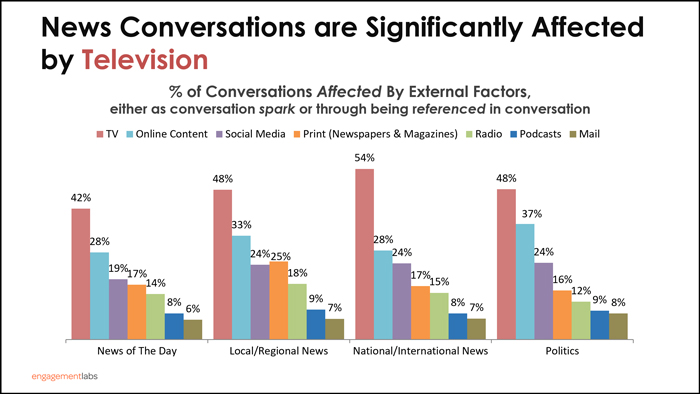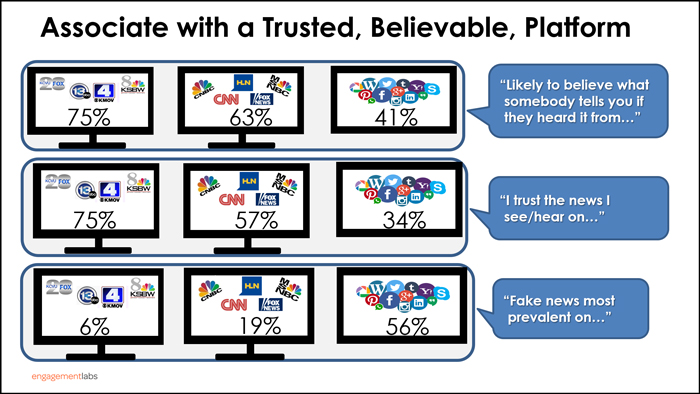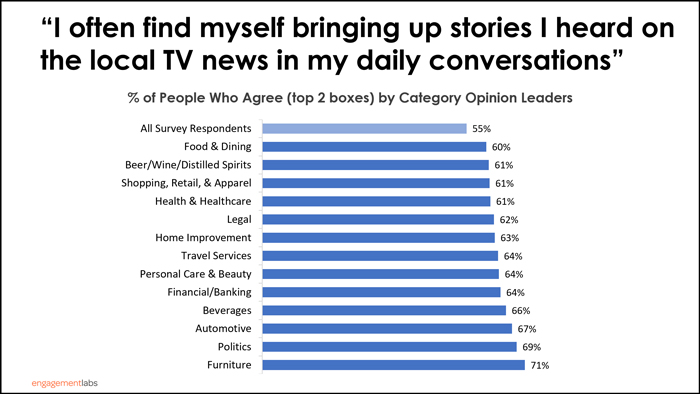TVB Broadcast Members: full study, category and demographic drilldown decks will display below for download when logged in. Create a TVB member account | Request forgotten password
Word of mouth has always been a critical influencer and form of marketing, but to what extent does media influence word of mouth? To find the answer, TVB commissioned “word of mouth” specialist Engagement Labs to assess and quantify the role media platforms have in driving Americans’ conversations. The survey data also provides insights into how Americans perceive the news they see and hear today across media platforms, highlighting the major topics Americans discuss in their daily conversations across political party affiliations, race, ethnicity, and product category opinion leaders.
As the country nears another presidential election cycle, the survey also dives into America’s political conversations, exploring what will motivate Americans to cast their vote in 2024 across political affiliations, key age groups, as well as race and ethnicity.
What Influences Conversations, Key Findings:
- Conversations are primarily face-to-face. In 2023, two-thirds of all conversations took place face-to-face. About as many conversations took place digitally as they did over the phone.
- Americans have more conversations about news of the day than they do about products and services and entertainment. At 7.7 in 2023, the number of daily news of the day conversations was up slightly over the 2022 study (7.1).
- Media affects conversations:
- Television is critical in sparking and supporting American conversations centered around news of the day, local/regional news, and politics. It is the dominant driver of these conversations versus online content, social media, print, radio, podcasts, and direct mail.
- More specifically, broadcast TV is a stronger driver of these conversations than both cable TV and streaming.
- Television is critical in sparking and supporting American conversations centered around news of the day, local/regional news, and politics. It is the dominant driver of these conversations versus online content, social media, print, radio, podcasts, and direct mail.
- Respondents said that local broadcast TV news is their primary news source:
- They also found local broadcast TV news to be the most shareworthy, trustworthy, and believable.
- They found social media to be the least trustworthy, believable, and strongly associate it with fake news.
- Local broadcast TV news ranks #1 in increased trustworthiness compared to last year, while social media continues to erode.
- Key product category opinion leaders often mention stories they heard on the local news in their daily conversations and find local broadcast TV news to be the most trustworthy of all media platforms measured.
- 78% of respondents said they are very likely to vote in the upcoming Nov ’24 presidential election.
- The economy is the top motivating factor in getting respondents to vote in the upcoming presidential election.

(Q8/9) Conversations including either media spark or reference
Source: Engagement Labs TVB American Conversation Study 2023

Source: Engagement Labs TVB American Conversation Study 2023

Q13) Feelings about news summary: Top 2-box (Strongly Agree + Somewhat Agree)
Source: Engagement Labs TVB American Conversation Study 2023
For more information, please contact Hadassa Gerber, Chief Research Officer, TVB.

